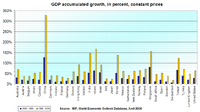
Photo from wikipedia
Whether old-growth (OG) forests have higher genetic diversity and effective population size, consequently higher conservation value and climate adaptive potential than second-growth (SG) forests, remain an unresolved issue. We have… Click to show full abstract
Whether old-growth (OG) forests have higher genetic diversity and effective population size, consequently higher conservation value and climate adaptive potential than second-growth (SG) forests, remain an unresolved issue. We have tested the hypothesis that old-growth forest tree populations have higher genetic diversity, effective population size (NE), climate adaptive potential and conservation value and lower genetic differentiation than second-growth forest tree populations, employing a keystone and long-lived conifer, eastern white pine (EWP; Pinus strobus). Genetic diversity and population structure of old-growth and second-growth populations of eastern white pine (EWP) were examined using microsatellites of the nuclear and chloroplast genomes and single nucleotide polymorphisms (SNPs) in candidate nuclear genes putatively involved in adaptive responses to climate and underlying multilocus genetic architecture of local adaptation to climate in EWP. Old-growth and second-growth EWP populations had statistically similar genetic diversity, inbreeding coefficient and inter-population genetic differentiation based on nuclear microsatellites (nSSRs) and SNPs. However, old-growth populations had significantly higher chloroplast microsatellites (cpSSRs) haploid diversity than second-growth populations. Old-growth EWP populations had significantly higher coalescence-based historical long-term NE than second-growth EWP populations, but the linkage disequilibrium (LD)-based contemporary NE estimates were statistically similar between the old-growth and second-growth EWP populations. Analyses of population genetic structure and inter-population genetic relationships revealed some genetic constitution differences between the old-growth and second-growth EWP populations. Overall, our results suggest that old-growth and second-growth EWP populations have similar genetic resource conservation value. Because old-growth and second-growth EWP populations have similar levels of genetic diversity in genes putatively involved in adaptive responses to climate, old-growth, and second-growth populations may have similar adaptive potential under climate change. Our results could potentially be generalized across most of the boreal and temperate conifer forest trees. Our study contributes to address a long-standing issue, advances research field and knowledge about conservation and ecological and climate adaptation of forest trees.
Journal Title: Frontiers in Genetics
Year Published: 2021
Link to full text (if available)
Share on Social Media: Sign Up to like & get
recommendations!